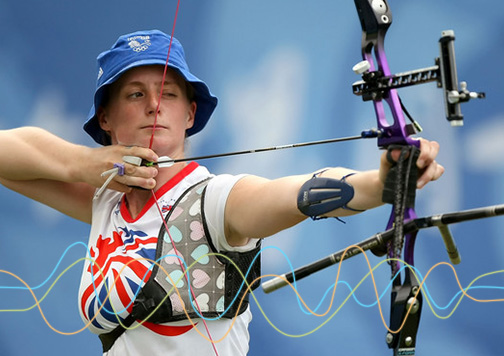Optimal Performance

Neurofeedback for Optimal Performance Training
Executives, Students, Athletes
Peak performance training using EEG biofeedback can be likened to training in a gym. With repeated exercise, just as muscles respond and gain strength, the brain similarly learns to self-regulate more and more optimally through Neurofeedback.
Neurofeedback has been used for optimizing performance by athletes in world class football, basketball and hockey teams. It has been researched for golf performance enhancement and by racquetball players
Canadian governing body for tennis and McGill University have committed to a five years study to put 80 of the region’s top athletes through Neurofeedback training.
Studies at Imperial College London have shown that Neurofeedback enhances the performance of musicians and dancers. Opera singers, musicians, and students have benefited from Neurofeedback training to improve their performance, creativity, and memory. Research has shown it improves microsurgical skills and reduces time spent on tasks by 26%.
Alpha-theta training is a specialized form of Neurofeedback training which is offered without any visual stimulus. Instead, the clients relax on a recliner, or in a chair, with headphones that send auditory stimuli to the brain. These auditory signals alter in response to the brain state.
An awake state, as well as alpha-theta training, is used according to the particular performance needs of the individual looking for Neurofeedback training for peak performance.
The Reaction Time Suite includes both continuous performance testing (CPT) and real sports reaction time training.
- We teach athletes the ability to be in control under pressure
- We coach consistency and the ability to refocus
- We provide goal setting skills
- We track and decrease negative self-talk
- We create a pre-competition game plan
- We discuss strategies for energy management and self-confidence
- We improve the self-regulation of different physiologies:, peripheral skin temperature, electrodermal response (sweating), muscle tension (EMG), heart rate and the synchrony of heart rate with respiration (RSA)
Improvements in training can be seen within 10-20 training sessions. Training can improve both physical and mental skills. Physical skill enhancement can come from improving muscle training (relaxation and correct muscle coordination), sweat response (emotional control), heart rate variability (calmness and efficiency) and temperature (recovery from training). Mental training includes Neurofeedback for improving focus, lessening stress, enhancing imagery effectiveness, eliminating or lessening negative self talk, and recovery from fatigue. In short, it allows athletes to be more consistently ‘in the zone’. The BF/NF programs are also designed to match the nature of each sport; the type of skill needed, the time period, and the changes necessary within the actual sport performance. Being calm in one part of a skill may be important but being highly energized in another part may lead to better performance. The brain and body should be trained to be flexible to match the sequence of mental and physical states needed.
Performance Enhancement
Many Business executives, managers, sales associates, nurses, doctors, lawyers and other professionals have used Neurofeedback services to give them a competitive edge. Musicians, writers, singers, computer programmers and other performing artists have used Neurofeedback to enhance their creativity and skills, to refine their skills and performance, while being able to access and stay in “The Zone”.
Neurofeedback or EEG Biofeedback helps the brain regulate itself and self regulation is key to optimal brain functioning. It is best considered as mental fitness training that over time teaches the individual’s brain improved skills of managing attention, arousal (level of excitability), and affective or emotional state.
Here are some examples of optimal frequencies for different tasks;
- to concentrate, read and memorize effectively, your brain requires unique states which are SMR alpha and theta.
- to engage in a high level of mental activity often associated with decision making, logic and problem solving, requires a beta frequency (14-24 hz)
- quiet body active mind for attention, information storage and retrieval, sequencing and for optimal performance sports and high performance tasks such as race car drivers, requires an SMR (12-14 hz) frequency.
- relaxed but alert state of mind, resting wakefulness and the relaxed state after the execution of a task, such as the “pause” that the brain takes before executing the next task. for example the ability for a race car driver to execute the next required task at 200 mph requires very specific and efficient cycling of the brain and the ability of the brain to switch into alpha (8-12 hz) briefly before the next task is required to be executed.
- optimal state of mind for heightened creativity, sustained inspiration requires a theta frequency (4-8 hz) this is an optimal frequency for artists, musicians, composers and many other individuals.
- deep physical and mental relaxation, this is a delta frequency (less than 4 hz) this is important for restorative sleep as well.







